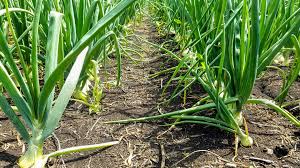Optimizing Onion and Garlic Farming in Kenya: A Comprehensive Guide to Integrated Weed Management

Are you in need of in-depth knowledge on onion and garlic production? If yes, we are a call away. Our service chatter includes: Onion seedlings, Garlic seedlings, Farm planning services, Soil testing, Drip irrigation installation and maintenance, Agronomic support, Onion and Garlic value pack and Farm management. For free consultation, placing orders or booking a visit with an agronomist, please contact us via Call or what’s app +254703982228, Email: Info@oniondoctor.co.ke.
Embark on a journey to successful onion and garlic farming in Kenya, overcoming unique challenges through an integrated weed management program. Discover the significance of tailored weed control strategies and how Onion Doctor's expertise revolutionizes crop management for smallholder farmers. Explore the intricacies of planting densities, weed competition, and effective pre-planting weed management methods.
An integrated weed management program is essential for onion and garlic production because of the unique challenges posed by their planting densities and susceptibility to weed competition. These crops are slow-growing and shallow-rooted, planted at high densities, and susceptible to severe yield loss from weed competition. Their narrow, upright leaves do not compete well with weeds, and their long growing season allows for successive flushes of weeds. Weed control is often challenging in these crops because few herbicides are registered, mechanical cultivation is often limited in high-density plantings, and hand-weeding can be costly. A good integrated weed management plan can increase the ease and effectiveness of these management tactics. Planting densities for onion and garlic pose unique challenges to weed management. These crops are sown at high plant densities and are not thinned to produce the greatest possible yield per acre. Onions are planted with 4 to 10 seed lines on beds that are 40 to 80 inches wide (furrow to furrow), or 36 inches wide in the intermountain area. Garlic is typically planted with 2 to 4 seed lines on 40-inch beds. These planting configurations limit cultivation to the furrow and narrow row middles on the bed top. Emphasis must be placed on techniques that reduce weed pressure before planting, such as the use of the stale seedbed method, weed-free seed, or soil solarization. Any method that reduces the amount of weed seed in the soil will reduce weeding costs during crop production. Another good way to prevent weed problems is to control existing weeds before they go to seed.
Weed Management Before Planting Nonchemical control options are primarily limited to the preplant period in onion and garlic production. For most weed control methods, timing is important because small weed seedlings are easier to kill than larger weeds.
Crop Rotation With Cover Crops: Cover crops are rarely used in onion and garlic production. However, they can provide a variety of benefits to the crop when used in crop rotations, especially if they are grown in the fall prior to planting Alliums.
Timing is the key to whether cover crops promote or inhibit weed growth. If cover crops become established quickly, they will suppress weeds. Adequate seeding rate of the cover crop is also an important factor in providing rapid ground cover and suppressing weeds. Vigorous cover crops that provide complete ground cover in the first 30 days of the cover crop cycle are very competitive with weeds and greatly limit weed growth. Avoid slow-growing cover crops, including legumes and many cereal-legume mixes, which allow substantial weed growth and set seed early in the growth cycle of the cover crop.
Cover crop residues must have adequate time (at least 3 to 4 weeks) to break down in the soil before planting onion and garlic, which require shallow, precise seeding depth with good seed-to-soil contact. Cover crop residues can increase pressure from certain diseases and insect pests. For example, cover crops can increase seedcorn maggot numbers. If a cover crop is used, incorporate the cover crop three to four weeks before planting onion or garlic to avoid tilling in green residues that attract this pest. Cover crops also have the potential to increase weed pressure for the following reasons. Annual weeds frequently establish themselves at the time of the cover crop. Depending upon the species, weeds can grow in the cover crop and set seed unnoticed. Weeds often decompose before the end of the cover crop cycle, making their detection difficult. In such cases, the cover crops act as nurse crops to weeds, making substantial contribution to the weed seed bank. It is important to monitor your cover crops, particularly in the first 40 days following seeding, to make sure that they are not creating a weed problem for subsequent plantings of onion and garlic.
Onion Doctor supports small holder farmers across Africa with quality and affordable Onion and Garlic seedlings, Onion seedlings, Farm planning services, Soil testing, Drip irrigation installation and maintenance, Agronomic support, Onion and Garlic value pack, Farm management, E-extension and on-farm training for farmers to optimize on yields and get maximum profits.
